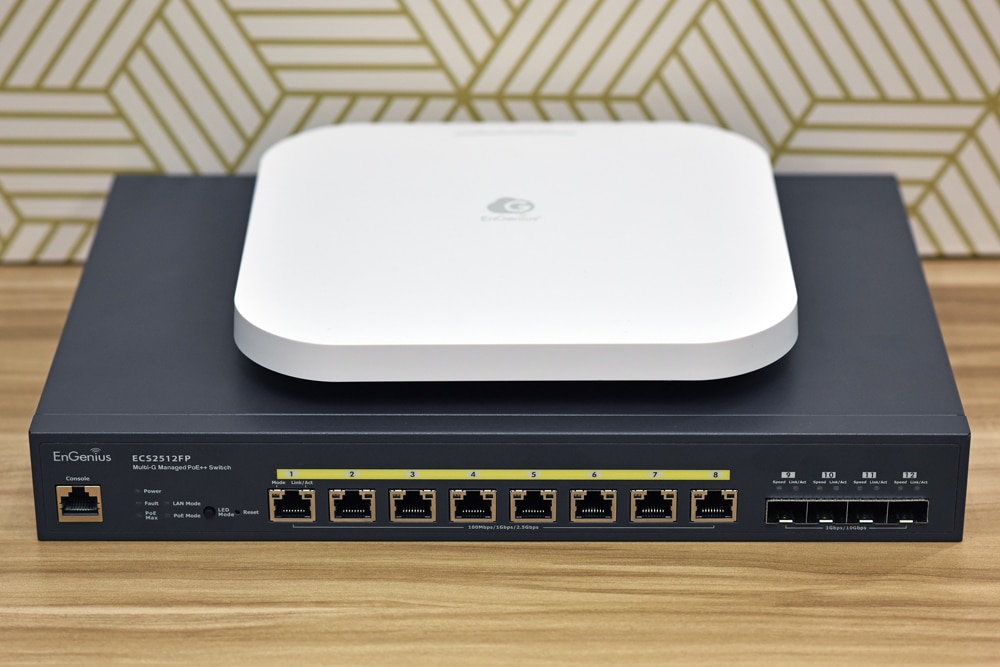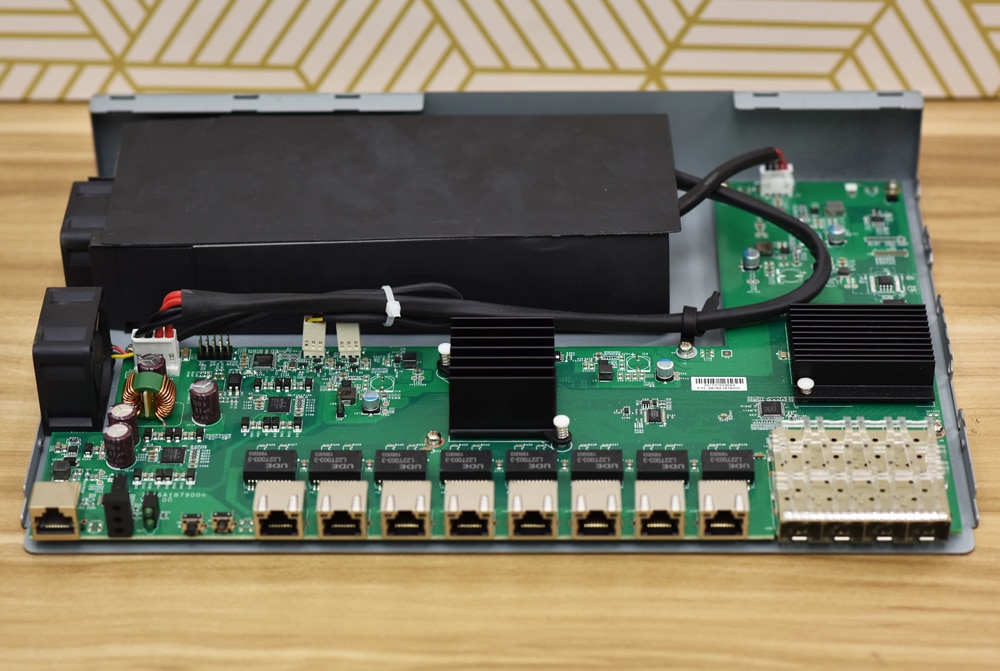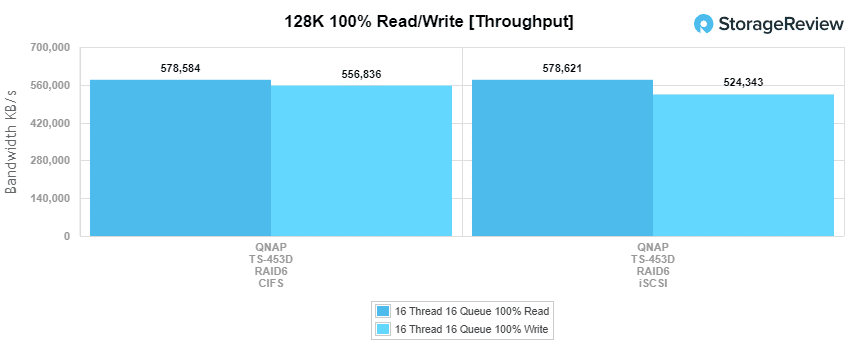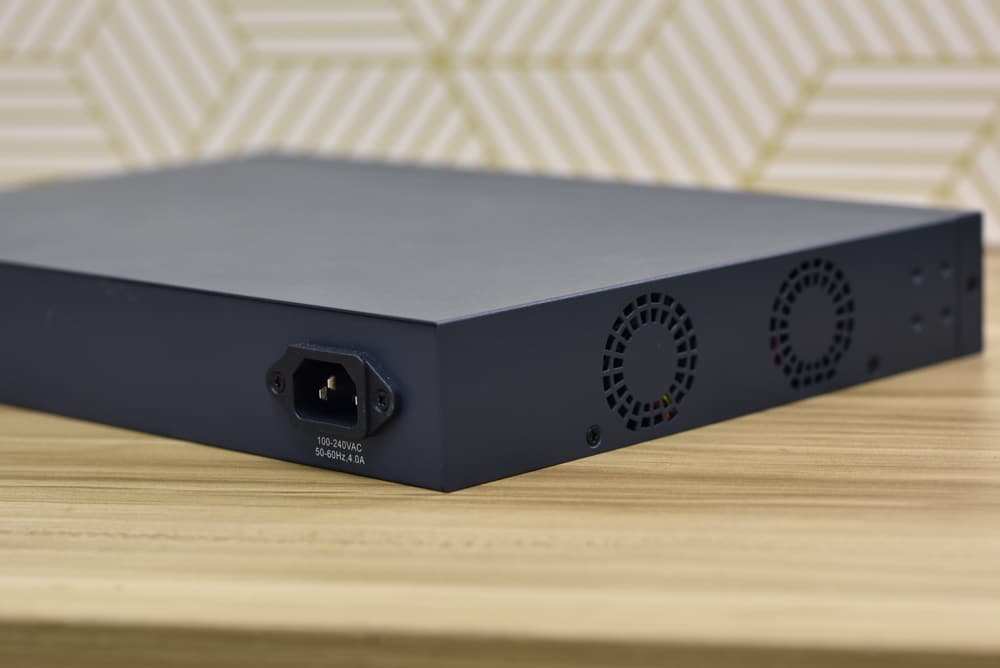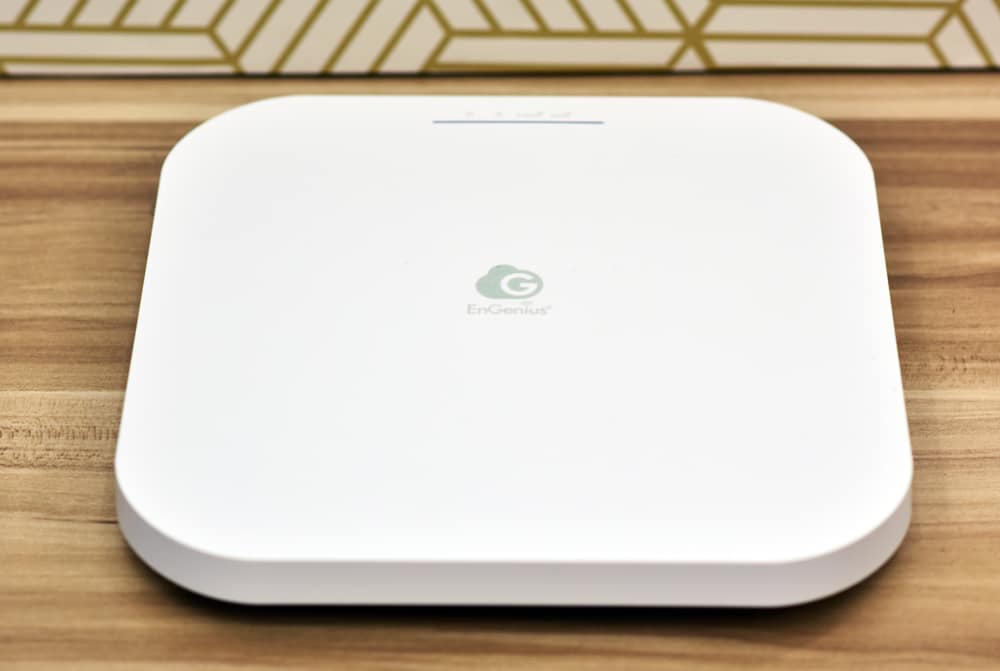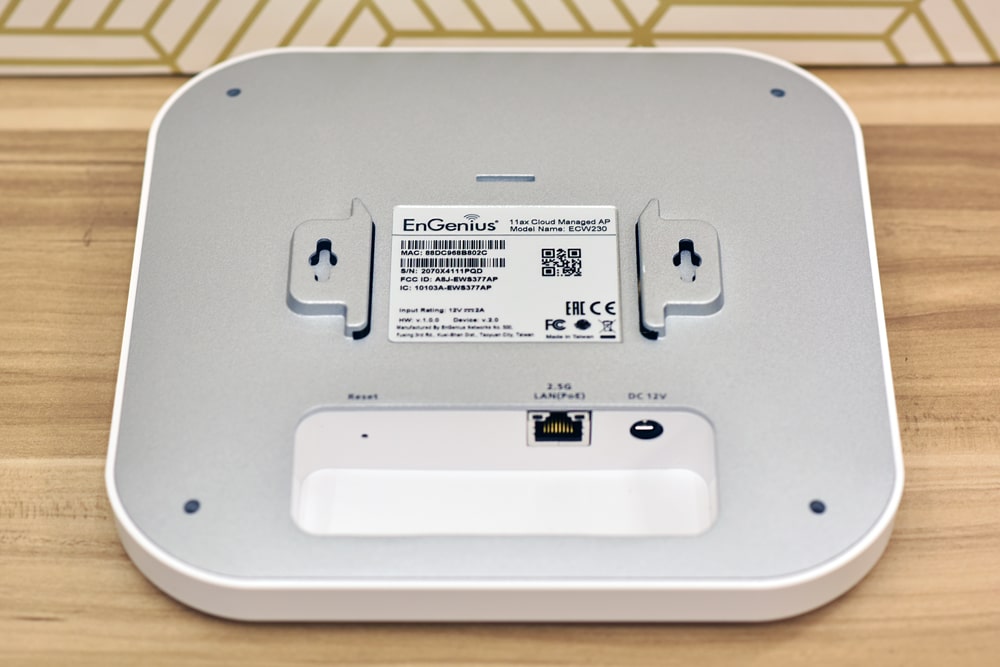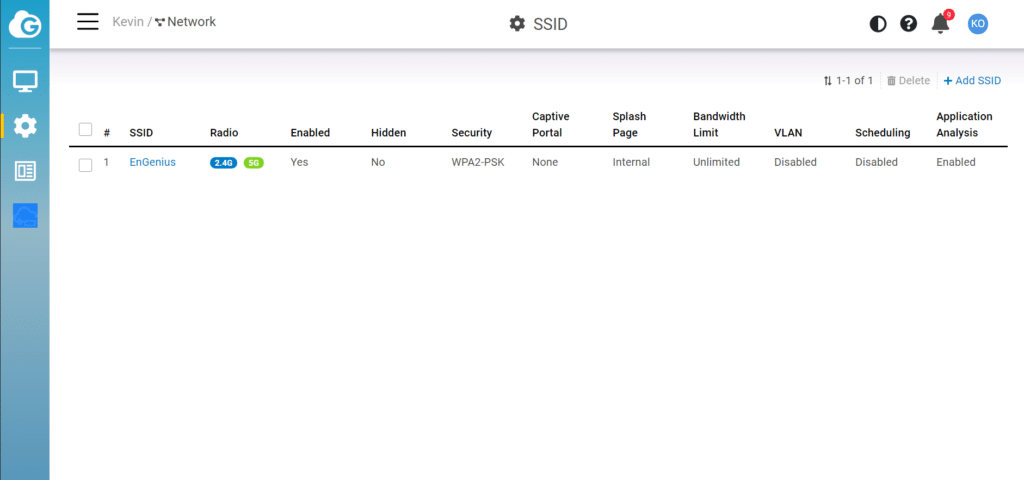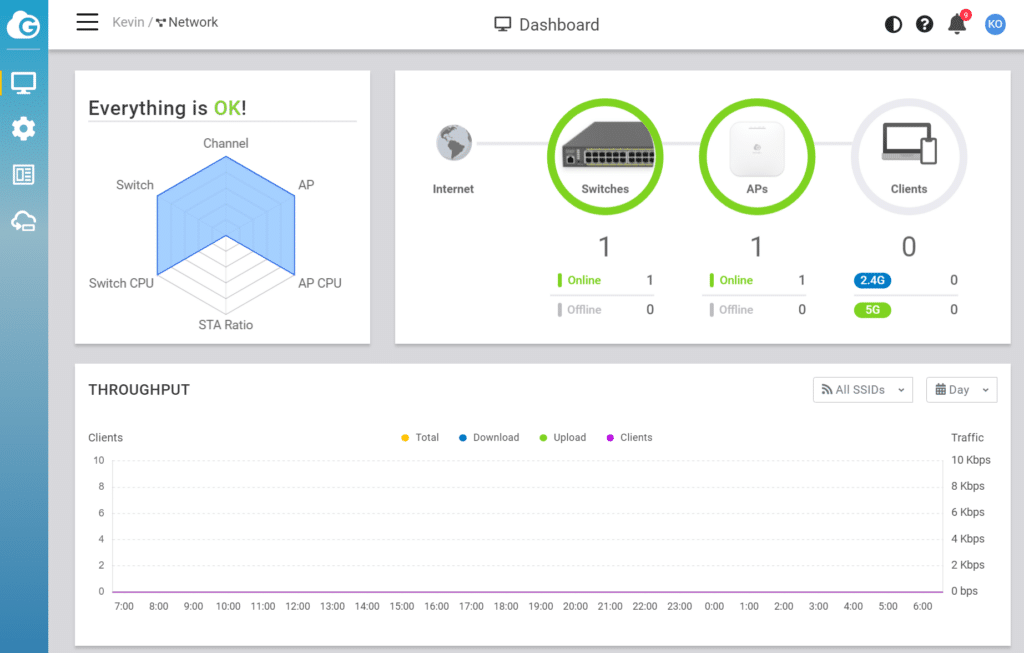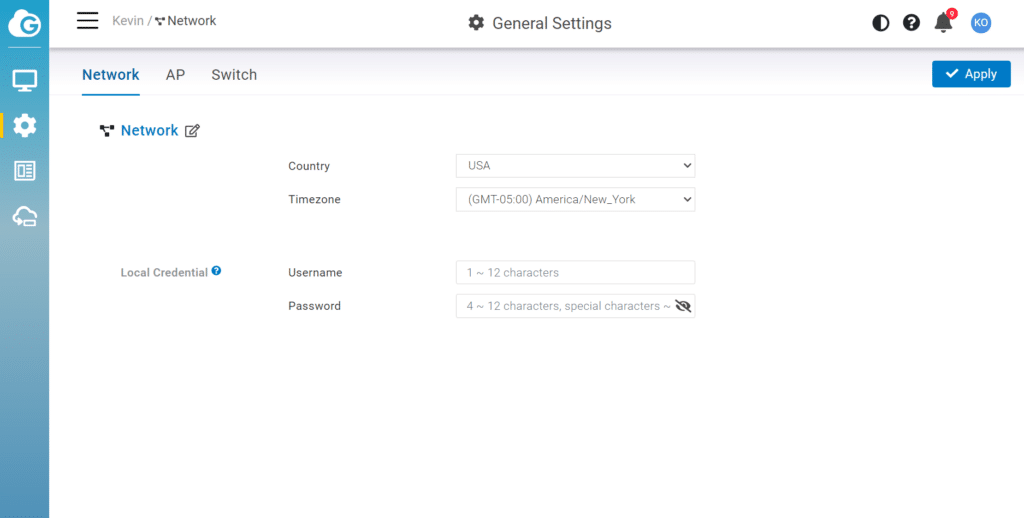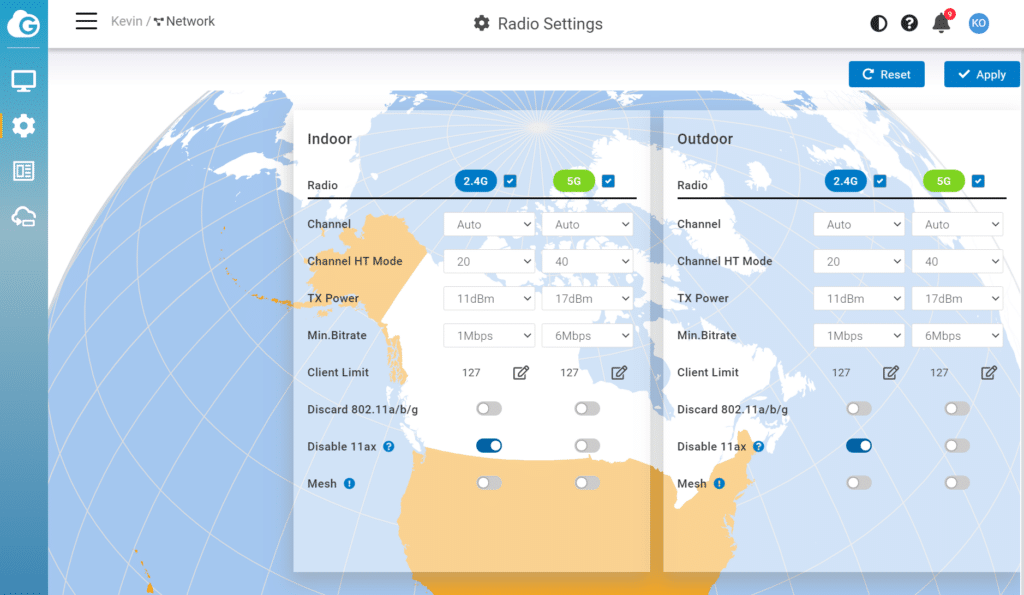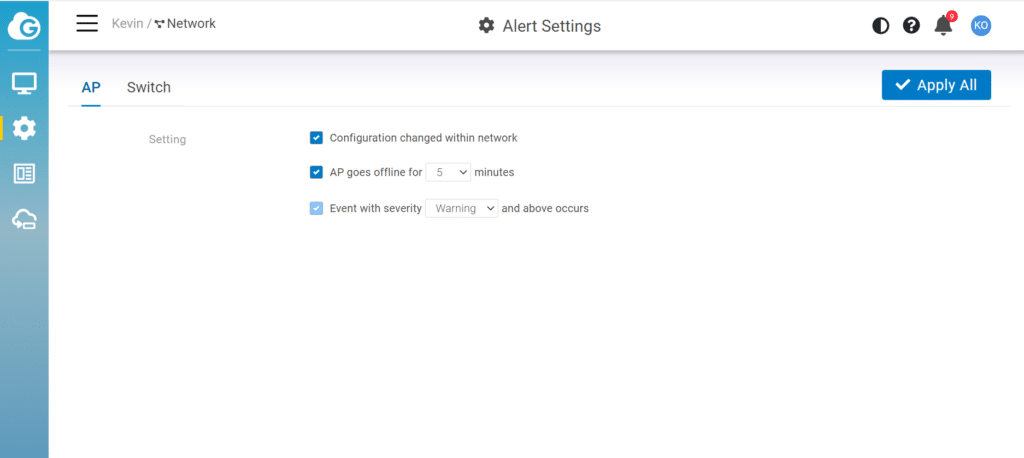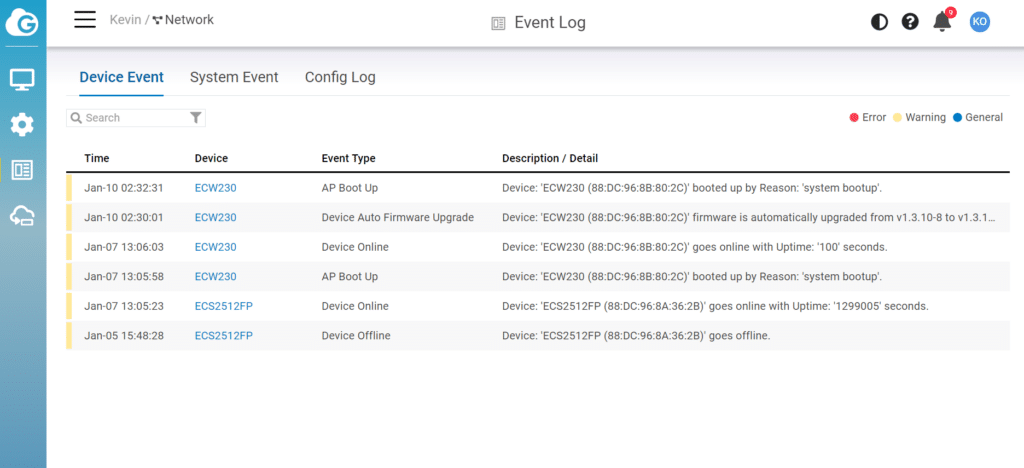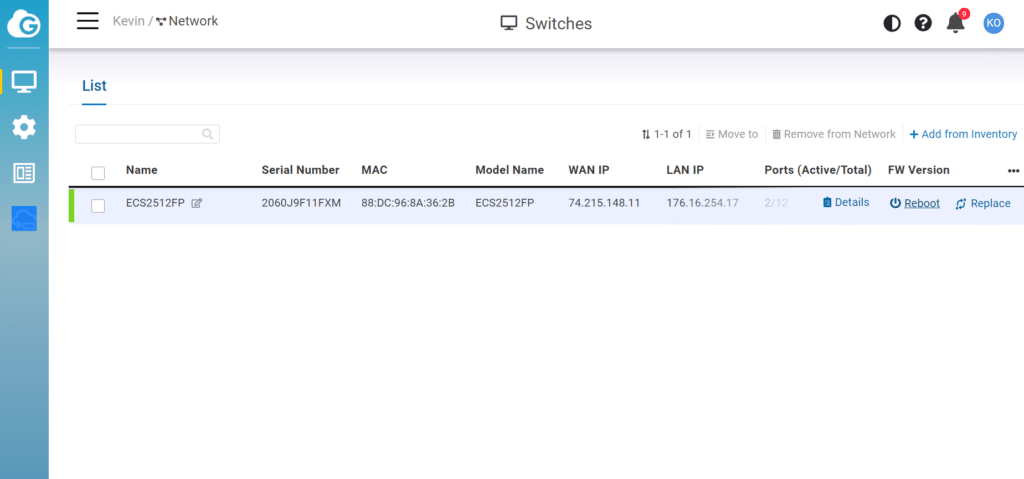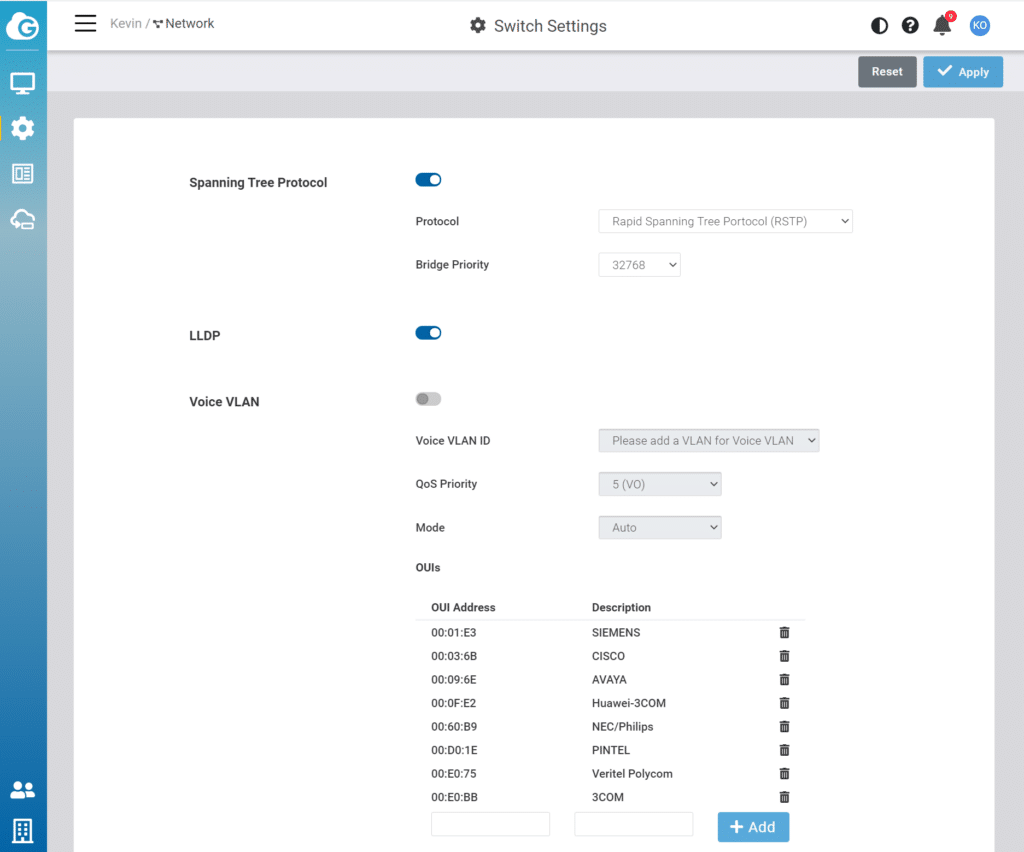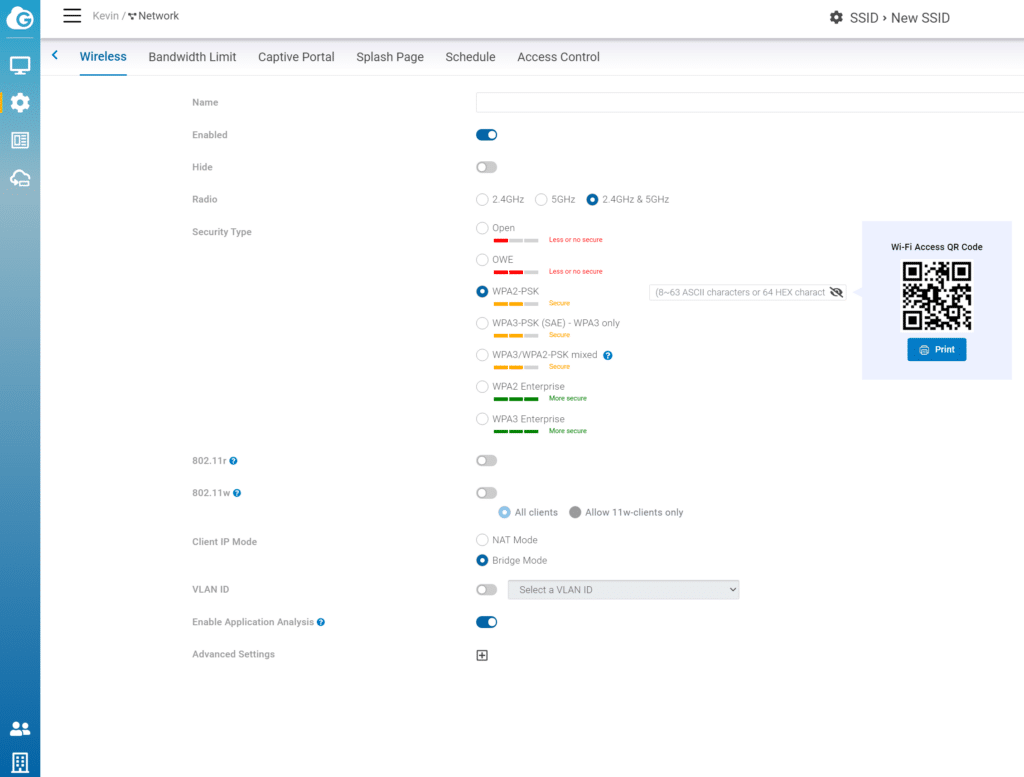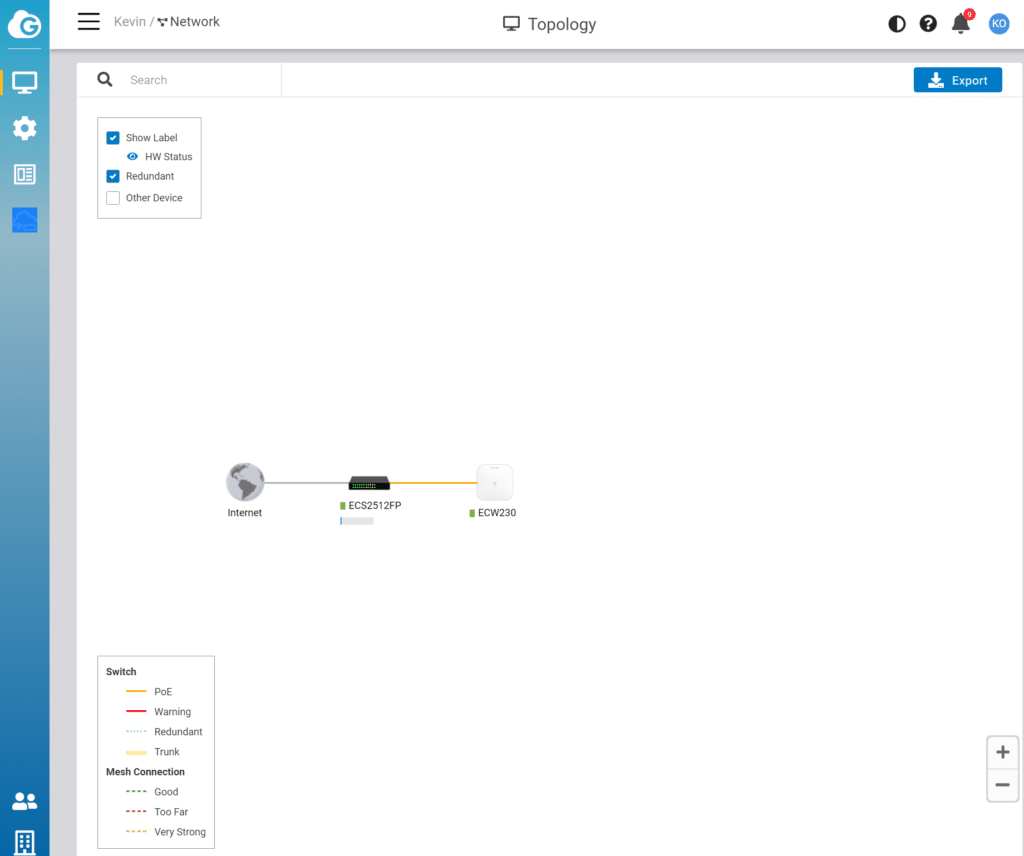The EnGenius Cloud line is the company’s newest generation of network devices that can be easily managed online via their web-based and mobile GUI, which is highlighted by its comprehensive, yet easy-to-use, range of features. One of the first models from this line is the ECS2512FP, a multi-Gigabit switch equipped with eight 100Mbps/1Gbps/2.5Gbps ports, all of which feature 802.3af/at/bt PoE++ with a 240W PoE budget, and four 10G SFP+ uplink ports. The ECS2512FP is the high-end model of the line (the other being ECS2512), bringing enterprise-class features to organizations looking for a solution that helps to simplify both network configuration and monitoring. These types of switches are also used by organizations looking for a flexible way to upgrade and optimize their network, power remote devices, as they help ensure peak performance 24/7.
The EnGenius Cloud line is the company’s newest generation of network devices that can be easily managed online via their web-based and mobile GUI, which is highlighted by its comprehensive, yet easy-to-use, range of features. One of the first models from this line is the ECS2512FP, a multi-Gigabit switch equipped with eight 100Mbps/1Gbps/2.5Gbps ports, all of which feature 802.3af/at/bt PoE++ with a 240W PoE budget, and four 10G SFP+ uplink ports. The ECS2512FP is the high-end model of the line (the other being ECS2512), bringing enterprise-class features to organizations looking for a solution that helps to simplify both network configuration and monitoring. These types of switches are also used by organizations looking for a flexible way to upgrade and optimize their network, power remote devices, as they help ensure peak performance 24/7.
Multi-Gigabit Ethernet switches are very useful for all kinds of applications. They have the ability to allow connections to operate at any speed (up to the port’s capabilities, in this switch’s case, either 100Mbps, 1Gbps, or 2.5Gbps) using a Cat 5e or Cat 6 Ethernet cable. With EnGenius’ multi-Gigabit Ethernet switches, you can simply connect a multi-Gigabit-capable device to the appropriate port and the ECS2512FP will select the fastest supported speed automatically. In addition, the ECS2512FP comes with support for IEEE 802.3bt Power-over-Ethernet, allowing the switch to transfer 60W of power to each port (from a total of 240W) for more power-hungry devices like Wi-Fi access points.
As such, we are also looking at the EnGenius Cloud Managed ECW230, a 4×4 Wi-Fi 6 (802.11ax) indoor access point that helps organizations improve the capabilities of their wireless network. Access points are particularly useful for businesses due to their extensive transmission range and ability to produce stronger signals in areas they are most needed. Moreover, they also support higher user access and offer a range of safety precautions to keep your business operations running smoothly.
The ECW230 features a low-profile form-factor, a Qualcomm Quad-Core ARM Cortex A53s (2.0GHz) CPU, and is quoted to deliver speeds up to 1,148Mbps when connected to a 2.4 GHz frequency and 2,400 Mbps via a 5GHz frequency. Though the ECW230 doesn’t come bundled with a power adapter (you will need to buy it separately), it is a Power-over-Ethernet device (PoE), meaning it can be powered via an Ethernet cable by switches that offer this functionality. The ECW230 also features target wake time to save costs, eight SSIDs for both 2.4GHz and 5GHz radios, and a range of wireless security features like WPA2 Enterprise (AES), MAC Address Filtering (up to 32 MACs per SSID), and Client Isolation.
Both of these devices are managed through the company’s free EnGenius Cloud service, which offers a range of features including real-time system metrics, deep-dive analytics, network troubleshooting, and advanced view to display network topology with the devices and relationships. We’ll cover the comprehensive GUI below.
Released in the summer of 2020, the Cloud ECS2512FP is what the company says will be the first of many EnGenius switches to come. The new multi-Gigabit switch is also backed by a 2-year warranty and goes for roughly $749. The ECW230 Access Point goes for roughly $600 and also comes with a 2-year warranty.
EnGenius Cloud ECS2512FP Multi-Gigabit Switch Specifications
| Port Standards | 802.3 10Base-T Ethernet
802.3u 100Base-TX Ethernet 802.3ab 1000Base-T Ethernet 802.3bz 2500/5000Base-T Ethernet 802.3x Full-Duplex Flow Control |
| Network Ports | 8 10/100/1000/2500 Mbps Ports + 4x SFP+ Ports |
| Switching Capacity | 120Gbps |
| SDRAM | 512MB |
| Flash Memory | 128MB |
| PoE Capable Ports | 1-8 (802.3bt/at/af) |
| Total PoE Budget | 240W |
| Power Source | 100 ~ 240VAC, 50-60Hz |
| LED Indicators | Power LED
Fault LED PoE Max LED LAN Mode LED PoE Mode LED |
| Ports | Link/Activity/Speed (per Ethernet port)
Link/Activity/Speed (per SFP slot) |
| Software Features (L3 Features) | |
| Multiple IP Interface | 20 IPv6 address |
| ARP Table | Max. 192 ARP entries |
| Static ARP | Static 192 ARP entries |
| IPv4 Static Route | Max. 63 entries |
| IPv6 Static Route | Max. 21 entries |
| MAC Address Table | 16K |
| Jumbo Frame | 9K |
| Multicast Group | Max 256 groups |
| MLD Snooping | MLD Snooping: v1 |
| QoS-Number of Priority Queues Supported | Queue 8 |
| Trust Mode | Cos/802.1p
DSCP CoS/802.1p-DSCP |
| Scheduling Mechanism | Strict / WRR/ Strict + WRR |
| Bandwidth Control | Port-based bandwidth control (Ingress/Egress) |
| Port Security | Max. 256 Entries |
| Max. 256 Entries | MAC Based ACL
IPv4/IPv6 Based ACL ACL Binding Time base ACL |
| Web Graphical User Interface (GUI) | HTTP IPv4 / IPv6
HTTPS IPv4 / IPv6 |
| SSL Certificate | Certificate/Key Import |
| SNMP | SNMP v1/v2c/v3 Support |
| RMON | RMON 1,2,3,9 |
| System Time | Time Setting/Daylight saving |
| Common L2 Features | 802.1d Spanning tree
Loopback Detection Multicast Filtering IGMP Multicast Forwarding IGMP Snooping MLD Multicast Forwarding 802.1Q VLAN tagging 802.3x flow control 802.3ad Link Aggregation IPv4 DHCP Relay IPv4 DHCP Snooping IPv4 DHCP Snooping Source MAC Address Check-up ARP Inspection ARP Packet Validation (additional validation checks) Voice VLAN Port-based VLAN Protocol-Based VLAN CoS Mapping 802. 1X Radius Authentication Protocol IPv4 Settings IPv6 Settings IEEE 802. 3az Energy Efficient Ethernet (EEE) Command Line Interface (CLI) SSH Server Telnet Server TFTP Client Configuration Upgrade/Backup Simple Network Time Protocol (SNTP) SYSLOG 802.1d Spanning tree |
| Environmental & Physical | |
| Temperature Range | Operating: 32°F to 122°F (0°C to 50°C) |
| Humidity (Non-Condensing) | Operating: 5% – 95% |
| Package Contents | 1x Cloud Managed Multi-Gig PoE++ Switch
1x Quick Installation Guide 1x Power Cord 1x RJ45 Console Cable 1x Rack Mount Kit |
| Device Dimensions & Weights | |
| ECS2512FP Device | Weight: 5.7 lbs (2.6 kg)
Width: 9.05” (230 mm) Length: 12.99” (330 mm) Height: 1.73” (44 mm) |
| Packaging | Weight: 6.9 lbs (3.1 kg)
Width: 15.6” (396 mm) Length: 12.2” (310 mm) Height: 4” (102 mm) |
| Warranty | 2 years |
| Certifications | CE
FCC IC |
EnGenius Cloud Managed ECW230 Access Point Specifications
| Technical Specifications | |
| Standards | IEEE 802.11ax on 2.4 GHz
IEEE 802.11ax on 5 GHz |
| Backward compatible with 802.11a/b/g/n/ac | |
| Processor | Qualcomm Quad-Core ARM Cortex A53s @ 2.0GHz CPU |
| Antenna | 4 x 2.4 GHz: 3 dBi
4 x 5 GHz: 3 dBi Integrated Omni-Directional Antenna |
| Physical Interface | 1 x 10/100/1000/2500 N-BASE-T, RJ-45 Ethernet Port
1x DC Jack 1 x Reset Button |
| LED Indicators | 1 x Power
1 x LAN 1 x 2.4 GHz 1 x 5 GHz |
| Power Source | Power-over-Ethernet: 802.3at Input
12VDC /2A |
| Maximum Power Consumption | 19.5W
|
| Wireless & Radio Specifications | |
| Operating Frequency | Dual-Radio Concurrent 2.4 GHz & 5 GHz |
| Operation Modes | AP, Mesh
|
| Frequency Radio | 2.4 GHz: 2400 MHz ~ 2482 MHz
5 GHz: 5150 MHz ~ 5250 MHz, 5250 MHz ~ 5350 MHz, 5470 MHz ~ 5725 MHz, 5725 MHz ~ 5850 MHz |
| Transmit Power | Up to 23 dBm on 2.4 GHz
Up to 23 dBm on 5 GHz (Maximum power is limited by regulatory domain) |
| Tx Beamforming (TxBF) | |
| Radio Chains/Spatial Stream | 4×4:4 |
| SU-MIMO | Four (4) spatial stream SU-MIMO for 2.4GHz and four spatial stream SU-MIMO for 5GHz up to 3,548 Mbps wireless data rate to a single wireless client device under both 2.4 GHz and 5GHz radio. |
| MU-MIMO | Four (4) spatial streams Multiple (MU)-MIMO for up to 2400 Mbps wireless data rate to transmit to two (2) two streams MU-MIMO 11ax capable wireless client devices under 5GHz simultaneously. |
| Four (4) Multiple (MU)-MIMO for up to 1,148 Mbps wireless data rate to transmit to two streams MUMIMO 11ax capable wireless client devices under 2.4GHz simultaneously. | |
| Supported Data Rates (Mbps): | 802.11ax:
2.4 GHz: 9 to 1148 (MCS0 to MCS11, NSS = 1 to 4) 5 GHz: 18 to 2400 (MCS0 to MSC11, NSS = 1 to 4) 802.11b: 1, 2, 5.5, 11 802.11a/g: 6, 9, 12, 18, 36, 48, 54 802.11n: 6.5 to 600 Mbps (MCS0 to MCS31) 802.11ac: 6.5 to 1733 Mbps (MCS0 to MCS9, NSS = 1 to 4) |
| Supported Radio Technologies | 802.11ax: Orthogonal Frequency Division Multiple Access (OFDMA)
802.11b: Direct-sequence spread-spectrum (DSSS) 802.11ac/a/g/n: Orthogonal Frequency Division Multiple (OFDM) |
| Channelization | 802.11ax supports very high throughput (VHT) —VHT 20/40/80 MHz
802.11ac supports very high throughput (VHT) —VHT 20/40/80 MHz 802.11n supports high throughput (HT) —HT 20/40 MHz 802.11n supports very high throughput under the 2.4GHz radio –VHT40 MHz (256-QAM) 802.11n/ac/ax packet aggregation: A-MPDU, A-SPDU |
| Supported Modulation | 802.11ax: BPSK, QPSK, 16-QAM, 64-QAM, 256-QAM, 1024-QAM
802.11ac: BPSK, QPSK, 16-QAM, 64-QAM, 256-QAM 802.11a/g/n: BPSK, QPSK, 16-QAM, 64-QAM 802.11b: BPSK, QPSK, CCK |
| Management | |
| Multiple BSSID | 8 SSIDs for both 2.4GHz and 5GHz radios. |
| VLAN Tagging | Supports 802.1q SSID-to-VLAN Tagging
Cross-Band VLAN Pass-Through Management VLAN |
| Spanning Tree | Supports 802.1d Spanning Tree Protocol |
| QoS (Quality of Service) | Compliant with IEEE 802.11e Standard
WMM |
| SNMP | v1, v2c, v3 |
| MIB | WPA3
WPA2 Enterprise (AES) WPA2 AES-PSK Hide SSID in Beacons MAC Address Filtering, Up to 32 MACs per SSID Wireless STA (Client) Connected List SSH Tunnel Client Isolation |
| Environmental & Physical | |
| Temperature Range | Operating: 32ºF~104ºF (0ºC~40ºC)
Storage: -40ºF~176 ºF (-40ºC~80ºC) |
| Humidity (non-condensing) | Operating: 90% or less
Storage: 90% or less |
| Device Dimensions & Weight | |
| ECW230 Device | Weight: 1.31 lbs. (597 g)
Length: 8.27″ (210 mm) Width: 8.27″ (210 mm) Height: 1.31″ (33.2 mm) |
| Package Contents | 1 – ECW230 Cloud Managed Indoor Access Point
1 – Ceiling Mount Base (9/16” Trail) 1 – Ceiling Mount Base (15/16” Trail) 1 – Ceiling and Wall Mount Screw Kits 1 – Quick Installation Guide |
| Warranty | 2 years |
Design and Use
At just over one and a half inches in height, 9 inches in width, and 13-inches long, the EnGenius Cloud ECS2512FP is a well-made switch with an all-metal chassis and an internally mounted power supply.
All connectivity is located on the front of the switch, including the eight 100Mbps/1Gbps/2.5Gbps ports that are front and center of the ECS2512FP (labeled by number). On the right are the four 10G SFP+ uplink ports, which are used to connect the ECS2512FP to other switches, larger networks, or trunk into a faster network at 10G speeds.
In the StorageReview Lab, we’ve been using the ECS2512FP as the backbone of our 2.5G-equipped NAS platforms. In this use, we have the NAS under load connected to the RJ45 ports on the switch negotiating a 2.5G connection and our servers connected to the switch via the 10G SFP+ uplink port. In such example of this is in our review of the 4-bay QNAP TS-453D, equipped with two 2.5G ports. Leveraging the switch, we were able to measure peak sequential throughput above 578MB/s read in our SMB test and 556MB/s in our write test.
On the left is the Console network port and all the status LEDs, including Power, Fault, LAN and PoE Mode, and PoE Max. Long pressing the reset button reverts the switch back to its factory default settings, while the LED mode selector button changes between LAN and PoE mode.
The sides of the switch have some ventilation, while the power connector is located on the back panel.
The ECW230 access point is an elegantly designed device, using an all-white, plastic build with a square-like build. It’s also fairly light, weighing in at 1.31 pounds at 8.27 inches in length/width and 1.31 inches in height, so moving around where it’s needed is no problem.
On the top is a light-grey EnGenius log at the center, and the four status LEDs above it: power, LAN, 2.3Ghz, and 5Ghz indicators.
Underneath the AP, you can see the DC 12V port (the adapter which, as we mentioned above, is not included), 2.5G LAN port (PoE), and reset hole.
Cloud Management
The ECS2512FP and ECW230 are both managed by EnGenius Cloud, the company’s comprehensive cloud-based management platform that allows organizations to manage their wireless/wired network devices via a modern, visualized interface.
EnGenius’ Cloud platform was quick and easy to install. All you have to do is sign up for the service on their website and log in. You’ll need to register all your devices using the serial numbers on the switches; however, you can do this all at once, as they allow you to enter multiple serial numbers (one per line) in the text field.
Once you’re at the dashboard, you will need to add your devices to the network. Just navigate to the Inventory section from the Organization icon on the left nav bar, select all the devices you want to add, then click Assign to Network and you’re done.
Overall, the EnGenius Cloud platform is very easy to navigate. It has a slick-looking GUI that is very responsive and we able to find whatever we needed without much effort. Additionally, there are a lot of tools at your disposal.
The Dashboard gives you general overall information about your network, including the number of switches, APs and clients, current performance, and if everything is running OK.
The General Settings page allows you to configure the network’s country, time zone, and user name/password. You can also configure AP devices (such as their LAN port, Syslog server, and messages for blocked client message settings) and switches (Syslog server).
In Radio Settings, you can configure all access points on the network, including channel, Tx power (transmission power), minimum bit rate, client limit, and mesh.
The Alert Settings page is where you can configure email alerts to be sent when certain network or device conditions/events occur. For example, you can set an email alert if an AP goes offline for a specific amount of time, or when a configuration is changed within the network. For switches like the ECS2512FP, you can set it to send alerts for events like when a device port link or STP status is changed, or when SSID, radio settings, firmware upgrades, or individual device settings override the default settings. This is very handy for the security and operation of your network.
The Event Log page lists events of individual devices on your network: which device it occurred on when it happened, the event type, and a detailed description. Events range from simply when a device was turned on to firmware upgrades.
The Switches page lists all the switches in your network, which lists the name, serial number, MAC address, model name, IP information, and active ports. You can also remove/add devices and reboot a specific switch.
On the Switch Settings page, you can enable the spanning tree protocol, LLDP and Voice VLAN.
You can easily add and delete SSIDs as well. Once you click the “add” link you will have a comprehensive list of settings available to you when configuring the new SSID, including the radio and security type, hide options, whether or not you want to enable 802.11r/w, client IP mode, and much more. You can also add bandwidth limitations, set when the SSID is available (both time and day), and add a customized splash page with a disclaimer when a user accesses a web page for the first time during their session.
The network topology page is a really interesting feature that provides admin users with a graphic overview of the network’s logical topology, as well as the overall status of all EnGenius devices. Our test network is small; however, for larger and more complicated topologies, you can easily zoom in to see specific points using the mouse wheel.
Mousing over devices will reveal useful information as well, including connection’s negotiated speed, usage, and a number of directly connected clients using it within the past 5 minutes. You can also easily click the device to get a more detailed overview.
To customize the look of the page, you can choose to show labels (to display/hide the device name and HW status of each device), HW stats (to display/hide the POE utilization of each device), redundant (to display/hide redundant links) and other devices (display/hide 3rd-party devices). You can also export the entire topology via PDF if you want to print it off or have an offline copy at your disposal.
Conclusion
The new EnGenius Cloud line will certainly provide organizations with quick-and-easy device installation as well as powerful configuration options at their disposal. The biggest draw of these cloud-based devices is the company’s subscription-free EnGenius Cloud. This free service allows users to monitor network metrics in real-time, view network topology, troubleshoot, and more via a modern, user-friendly interface. This comprehensive management software is also easy to set up: simply sign up for the service online, log in, and add the EnGenius Cloud switch to your network. EnGenius also offers a free, easy-to-use mobile app for even more flexibility, allowing users to manage their network on the go. There is a lot to like about this management platform.
The EnGenius ECS2512FP is one of the first models of the company’s new generation of Cloud-managed switches. Designed for mid to larger environments, the ECS2512FP (as well as the models that come after it) is highlighted by its future-proof design and its ability to scale as networks grow, giving organizations the flexibility to offer faster server and storage connections when it is needed. The ECS2512FP is a multi-gigabit switch that comes equipped with eight 2.5 gigabit ports that automatically detect the speed needed of the connected device. This certainly makes it much easier to manage as networks grow. It also supports 120 Gbps switching capacity and the latest PoE standards (802.3bt), the latter of which allows it to work well with power-demanding devices like Wi-Fi 6 wireless access points. We found it very easy to set up via the EnGenius Cloud and were able to navigate through the menus and configure it without any issues whatsoever.
Lastly is the ECW230–a great-looking, light-weight 4×4 Wi-Fi 6 indoor access point that helps to improve the overall capabilities of wireless networks. It is quoted to deliver speeds up to 1,148Mbps when connected to a 2.4 GHz frequency and 2,400 Mbps via a 5GHz frequency. It doesn’t come with a power adapter, but this is common though for Power-over-Ethernet (PoE) devices, as they are normally sold to those who will use their switch as a power source. Overall, this was a very easy device to set up, taking only several minutes to add the device to our network.
The EnGenius ECS2512FP and ECW230 will certainly be a welcomed addition to all types of networks. Devices from the new Cloud-based line like these will integrate well in both large and small networking infrastructures, including the enterprise StorageReview Lab. Some might want a switch or AP that is locally managed (rather than using the company’s management software that requires an internet connection) due to privacy and availability concerns; however, if this is something that doesn’t concern you, these Cloud-managed devices from EnGenius are one of the better ones out there. In addition, Wi-Fi 6 access points (like the ECW230) are becoming more and more popular, so organizations are looking for flexible switches that can produce both the necessary performance these devices require. The ECS2512FP fits this bill perfectly.
Engage with StorageReview
Newsletter | YouTube | Podcast iTunes/Spotify | Instagram | Twitter | Facebook | RSS Feed

